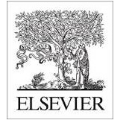Integrating sensing functionalities is envisioned as a distinguishing feature of next-generation mobile networks, which has given rise to the development of a novel enabling technology -- \emph{Integrated Sensing and Communication (ISAC)}. Portraying the theoretical performance bounds of ISAC systems is fundamentally important to understand how sensing and communication functionalities interact (e.g., competitively or cooperatively) in terms of resource utilization, while revealing insights and guidelines for the development of effective physical-layer techniques. In this paper, we characterize the fundamental performance tradeoff between the detection probability for target monitoring and the user's achievable rate in ISAC systems. To this end, we first discuss the achievable rate of the user under sensing-free and sensing-interfered communication scenarios. Furthermore, we derive closed-form expressions for the probability of false alarm (PFA) and the successful probability of detection (PD) for monitoring the target of interest, where we consider both communication-assisted and communication-interfered sensing scenarios. In addition, the effects of the unknown channel coefficient are also taken into account in our theoretical analysis. Based on our analytical results, we then carry out a comprehensive assessment of the performance tradeoff between sensing and communication functionalities. Specifically, we formulate a power allocation problem to minimize the transmit power at the base station (BS) under the constraints of ensuring a required PD for perception as well as the communication user's quality of service requirement in terms of achievable rate. Finally, simulation results corroborate the accuracy of our theoretical analysis and the effectiveness of the proposed power allocation solutions.
翻译:暂无翻译



